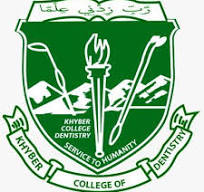FREQUENCY OF TRISMUS AND DIPLOPIA IN PATIENTS WITH ZYGOMATIC COMPLEX FRACTURES
DOI:
https://doi.org/10.33279/jkcd.v11i01.165Keywords:
Zygomatic complex fracture; Trismus; DiplopiaAbstract
Objective:
To determine the frequency of trismus and diplopia in patients with zygomatic complex fractures.
Materials and Methods:
This descriptive, cross-sectional study was conducted on 82 patients using non-probability consecutive sampling technique. Patients with ZMC fractures of age above 15 years of both genders were included. Patients with TMJ pathologies, history of previous surgery and having orbital pathologies were excluded. Trismus and diplopia were assessed clinically. Data was analyzed by using SPSS version 26. P value of ≤ 0.05 was considered significant.
Results:
Out of total 82 participants, mean age of the patients was 32.06±12.092 years. According to distribution of fracture sites, 36(43.9%) patients had Frontozygomatic (FZ) suture fracture, 45(54.9%) patients had zygomaticomaxillary suture fracture, 48(58.5%) patients had infraorbital rim fracture and 42(51.2%) patients had Zygomatic arch fracture. Trismus was present in 42(51.2%) patients and diplopia in 13(15.59%) patients. Association of trismus with various processes of ZMC, such as frontozyomatic process (p=0.275), zygomaticomaxillary process (p=0.825), infraorbital rim (p=0.122) was not statistically significant but on the other hand it was assocaited with zygomatic arch fracture (p=0.001). Association of diplopia with sight of fracture was not statistically significant except in infraorbital rim fracture (p=0.000) which was statistically highly significant.
Conclusion:
Frequency of trismus was high (51.2%), and that of diplopia was 15.9% in known cases of zygomatic complex fractures.
Downloads
Published
How to Cite
Issue
Section
License
Copyright (c) 2021 Anam Javed, Muhammad Jamal, Alaf Khan, Tahir Ullah Khan, Hanif Ullah, Hassan Sardar, Fahim Ullah

This work is licensed under a Creative Commons Attribution-NonCommercial-NoDerivatives 4.0 International License.
You are free to:
- Share — copy and redistribute the material in any medium or format
- Adapt — remix, transform, and build upon the material
- The licensor cannot revoke these freedoms as long as you follow the license terms.
Under the following terms:
- Attribution — You must give appropriate credit , provide a link to the license, and indicate if changes were made . You may do so in any reasonable manner, but not in any way that suggests the licensor endorses you or your use.
- NonCommercial — You may not use the material for commercial purposes .
- No additional restrictions — You may not apply legal terms or technological measures that legally restrict others from doing anything the license permits.










